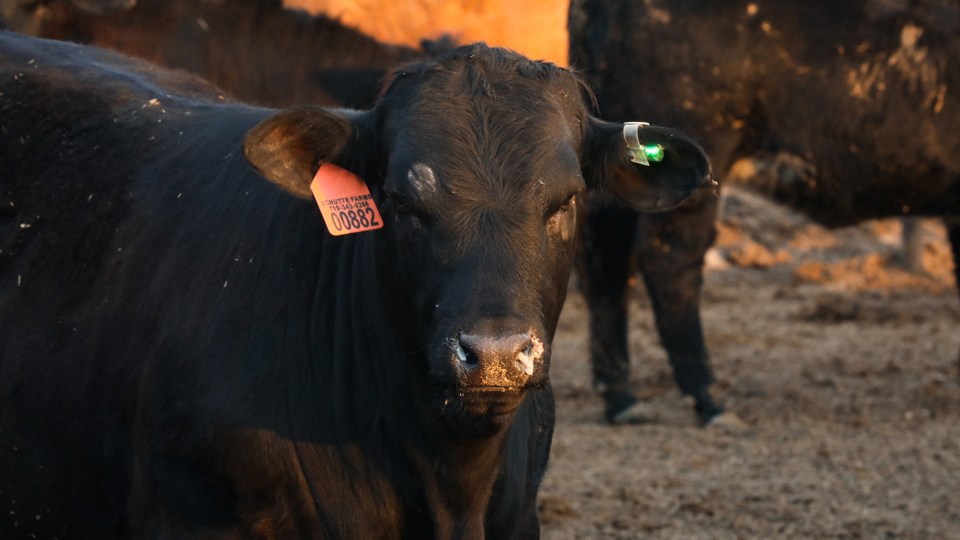Advancing your BRD outcomes
By Dr. Brent Meyer
You’ve heard the saying you can’t manage what you can’t measure. This is especially true when it comes to Bovine Respiratory Disease (BRD). Effective management and advancing health outcomes hinge on routinely tracking key measurements to make informed decisions.
Work with your veterinarian to set and focus on BRD-related health metrics. These may include BRD pulls per day, daily mortality and causes, first treatment and retreatment response, case fatality rates, pen mortality and BRD pulls by days on feed.
Your veterinarian also can help define parameters for pulls. This could include, but is not limited to, lethargy, nasal discharge, cough, increased respiration rate, gaunt appearance and increased rectal temperature. Do not assume every cattle death is due to BRD, and work with your veterinarian to get an accurate diagnosis.

Set goals based on the cattle received
Not all groups of cattle are the same. It is important to work with your veterinarian to set realistic goals based on cattle classification and feeding systems. If high-risk cattle are received, but less than 5% morbidity and less than 0.5% mortality rates are expected, you will likely be disappointed. No vaccine and/or antibiotic will move high-risk cattle into low-risk health numbers.1
Consider monitoring technology
SenseHub® Feedlot can help with early detection of animals needing attention — often before clinical disease signs are visually apparent. This means cattle can be pulled and treated earlier.
The system uses an electronic ear tag that tracks individual calf data, including body temperature and activity. Using proven algorithms, if a deviation from the ordinary is detected, an alert is sent to a mobile device or computer. Ear tags on these animals are illuminated and flashing to make it easy for pen riders to find and sort those needing care.
Good stockmanship pays
It is especially important to incorporate low-stress cattle handling and good stockmanship. This not only reduces stress on cattle and their caregivers, but it has the tendency to reveal timely pulls because cattle feel more comfortable showing sickness.
Aim for a calm and low-stress trip to the chute. Stressful conditions are known to increase cortisol levels, potentially resulting in a suppressed immune system and reduced vaccine efficacy.
Don’t forget about parasite treatment
Research shows that calves dewormed two weeks pre-vaccination maintained lower rectal temperatures following an IBR challenge than those dewormed at vaccination or not dewormed at all.2 This means they were better able to withstand the disease challenge than those who had not been dewormed.
Implement a solid internal parasite treatment protocol. Use care to follow dosage instructions to maintain product efficacy and give the animal the most benefit from the treatment.
Consult your veterinarian to help build a health program that advances your operation’s BRD outcomes.
Disclaimer
SenseHub Feedlot is not intended to diagnose, treat, cure, or prevent any disease in animals. For the diagnosis, treatment, cure, or prevention of diseases in animals, you should consult your veterinarian. The accuracy of the data collected and presented through this product is not intended to match that of medical devices or scientific measurement devices.
References
- Chirase, N. K. and L. W. Greene. Dietary zinc and manganese sources administered from the fetal stage onwards affect immune response of transit stressed and virus infected offspring steer calves. Anim. Feed Sci. and Tech. 2001. 93:217-228.
- J. S. Schutz, J. A. Carroll, L. C. Gasbarre, T. A. Shelton, S. T. Nordstrom, J. P. Hutcheson, H. Van Campen, T. E. Engle. Effects of gastrointestinal parasites on parasite burden, rectal temperature, and antibody titer responses to vaccination and infectious bovine rhinotracheitis virus challenge. J. Anim. Sci. June 2012. 90(6)1948-1954.
Find more content for your beef operation.
About the author

Brent Meyer, D.V.M.
Technical Services Veterinarian,
Merck Animal Health
